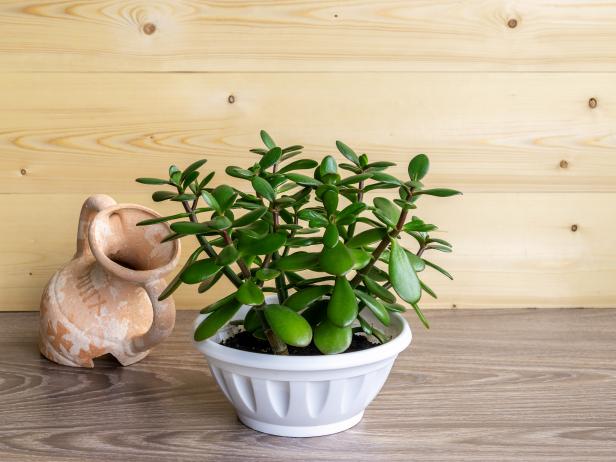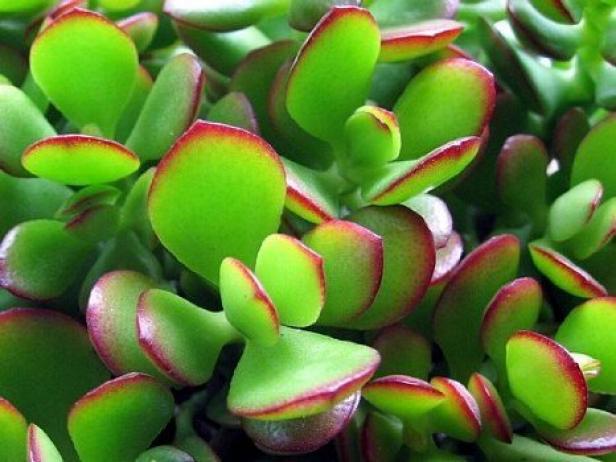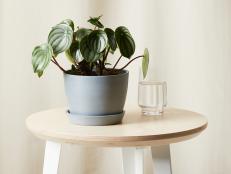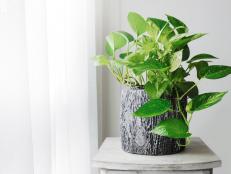Jade Plants: How to Grow These Easy-Care Houseplants
In a collection of houseplants, a healthy jade plant is a shiny jewel that stands impressively on its own or it can add a sturdy contrast to a grouping of succulents.

A jade plant is a succulent, with thick stems and plump, glossy green leaves. It’s native to South Africa, where it grows into a large shrub in the mild year-round climate. Where winter temperatures fall to freezing and below, jade plant is grown as a houseplant. It can spend summers outdoors in a protected area but must be brought inside during the colder months.

Jade Plant Care and Feeding
On the scale of fussiness, Crassula ovata (Jade’s botanical name) falls somewhere in the middle but is generally considered an easy-care houseplant. It’s happy growing in regular potting mix, thrives in a spot where it gets a few hours of filtered sun each day, tolerates low-humidity environments and rests easily in a room with average temperatures that is a bit cooler at night.
It does require a pot and potting mix with excellent drainage. If the soil stays too wet, the plant can suffer from root rot; if it’s too dry for too long, those plump leaves begin to shrivel. Keep an eye — or a hand — on the soil and provide water when it feels dry to the touch. Jade plants will require less water during winter.
And while the plant doesn’t need many hours of direct sun all year, make sure it gets enough light. Jade plants that have to reach too far for sunlight can grow leggy and top-heavy. It’s not prone to disease, but it can become a host for mealybugs, aphids, spider mites and scale insects.
Feed a jade plant every three to four months, slightly more often during the active growing season, using a water-soluble fertilizer. A good rule to follow for this and many other plant species: Water the plant as usual, then follow with the fertilizer solution. Adding fertilizer when the soil is bone dry may damage the plant’s roots.

Propagation
It’s easy to start a new Crassula from leaves or cuttings taken from an established plant. Snip a leaf from the plant and allow it to dry for a few days to form a callous, then tuck the cut end into a pot of moist potting mix. Place the pot in bright, indirect light. Roots should begin to form in a week or so.
To propagate a jade plant from a cutting, snip a 3- to 4-inch branch from your established plant and set it aside for a few days to dry. After a callous develops on the cut end, place the cutting upright in potting mix and water lightly. Roots should begin to form in a few days.
Jade plants can start quite small but over time can grow into a large and majestic specimen. If, after a few years, the plant becomes overgrown and awkward, use a pair of sharp pruning shears to prune it to a more suitable, attractive size and shape. You can prune any time of year, but the plant recovers more quickly during the active growing seasons of spring and summer. Root the cut stems and leaves to grow more plants.
Jade Varieties
Crassula ovata is the familiar version of what we commonly call a jade plant, with its thick, fleshy oval leaves. But there are several variations: a dwarf variety with smaller leaves and some that grow larger, or narrower, variegated or wavy, and with different color variations. C. ovata, the typical jade plant, also goes by other common names, including dollar plant, friendship tree and money tree.
In a container garden, a Crassula can serve as the accent plant among a variety of smaller succulents. And because of its tree-like form, jade plant — particularly a dwarf variety — is a good (and easy) candidate to train as a bonsai specimen.














































